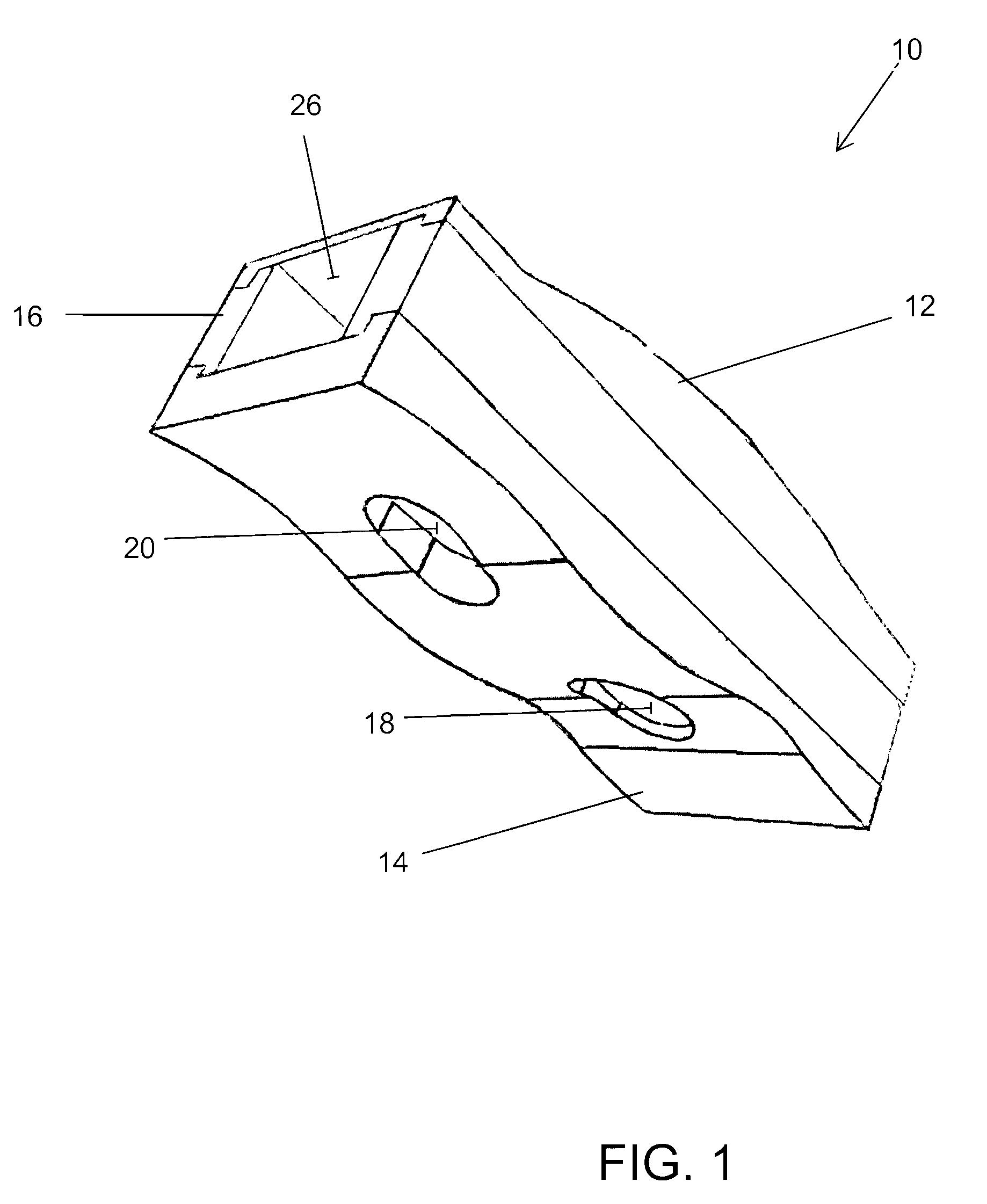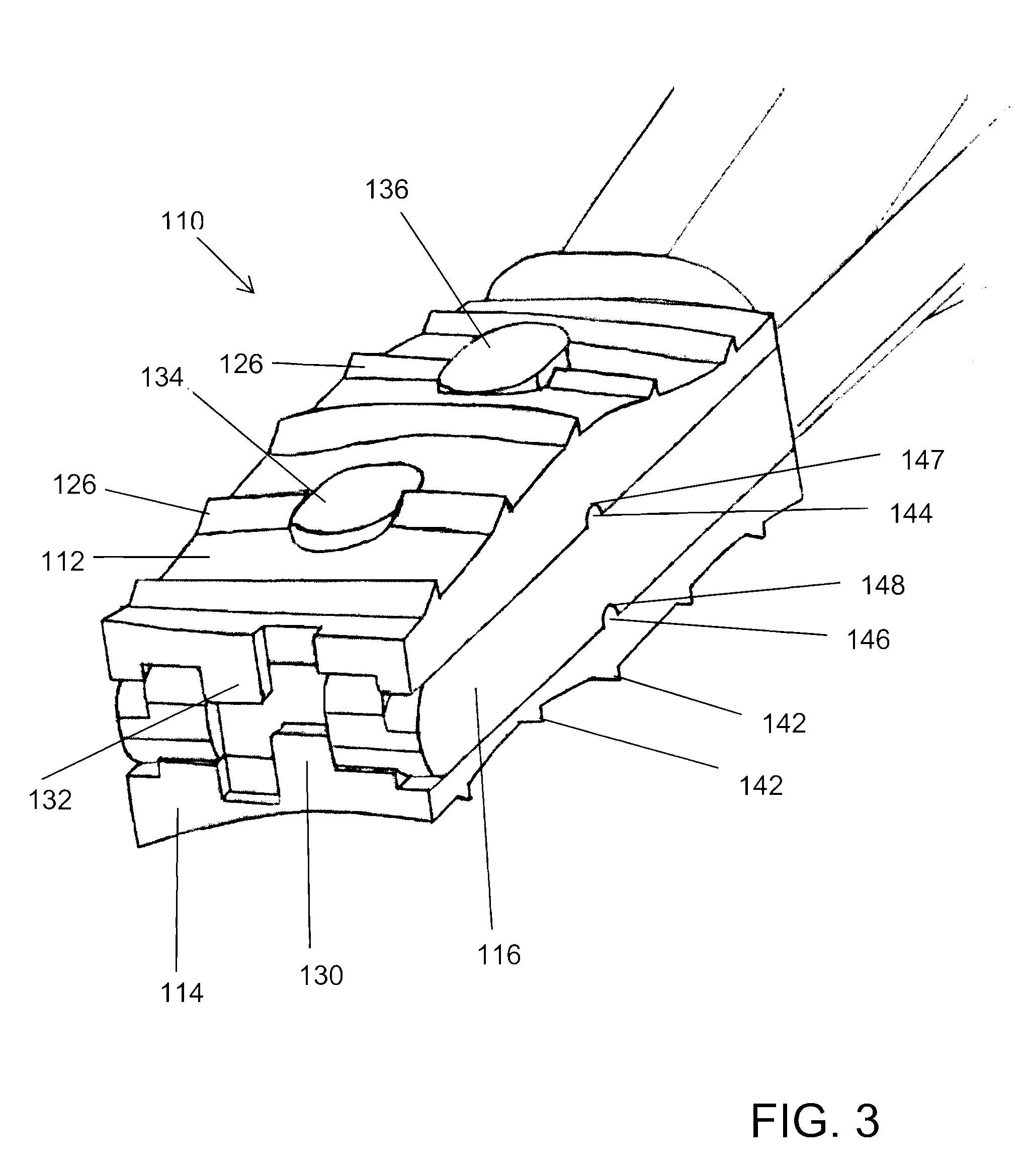Spinal Fusion Cage, Method of Design, and Method of Use
a fusion cage and spine technology, applied in the field of expandable fusion cages, can solve the problems of insufficient stability of the anterior approach to the spinal fusion, blood vessels, and disadvantages of the procedure, and achieve the effect of preventing backward motion
- Summary
- Abstract
- Description
- Claims
- Application Information
AI Technical Summary
Benefits of technology
Problems solved by technology
Method used
Image
Examples
Embodiment Construction
[0030] Before turning to a detailed description of the present invention, it should be noted that the terms “upper” and “lower” are used herein to distinguish various features or parts of the present invention. As these words are used herein, they refer to the relative position of the described part when implanted into a human body, and when that human body is erect. The terms are used for clarity of understanding only, and are not intended to place any specific limitations on the invention described herein. The same holds true for other variations on the words “upper,”“lower,”“upward,”“downward,” and the like.
[0031] The phrase “interior surface” or some variant thereof is also used herein, and refers generally to a surface of a device that disposed toward an interior of the device when the device is assembled.
[0032] The phrase “fixedly attached” is used herein to indicate a fixed attachment of any sort (i.e. one that is not readily releasable with damaging the device). It is cont...
PUM
 Login to View More
Login to View More Abstract
Description
Claims
Application Information
 Login to View More
Login to View More - R&D
- Intellectual Property
- Life Sciences
- Materials
- Tech Scout
- Unparalleled Data Quality
- Higher Quality Content
- 60% Fewer Hallucinations
Browse by: Latest US Patents, China's latest patents, Technical Efficacy Thesaurus, Application Domain, Technology Topic, Popular Technical Reports.
© 2025 PatSnap. All rights reserved.Legal|Privacy policy|Modern Slavery Act Transparency Statement|Sitemap|About US| Contact US: help@patsnap.com



